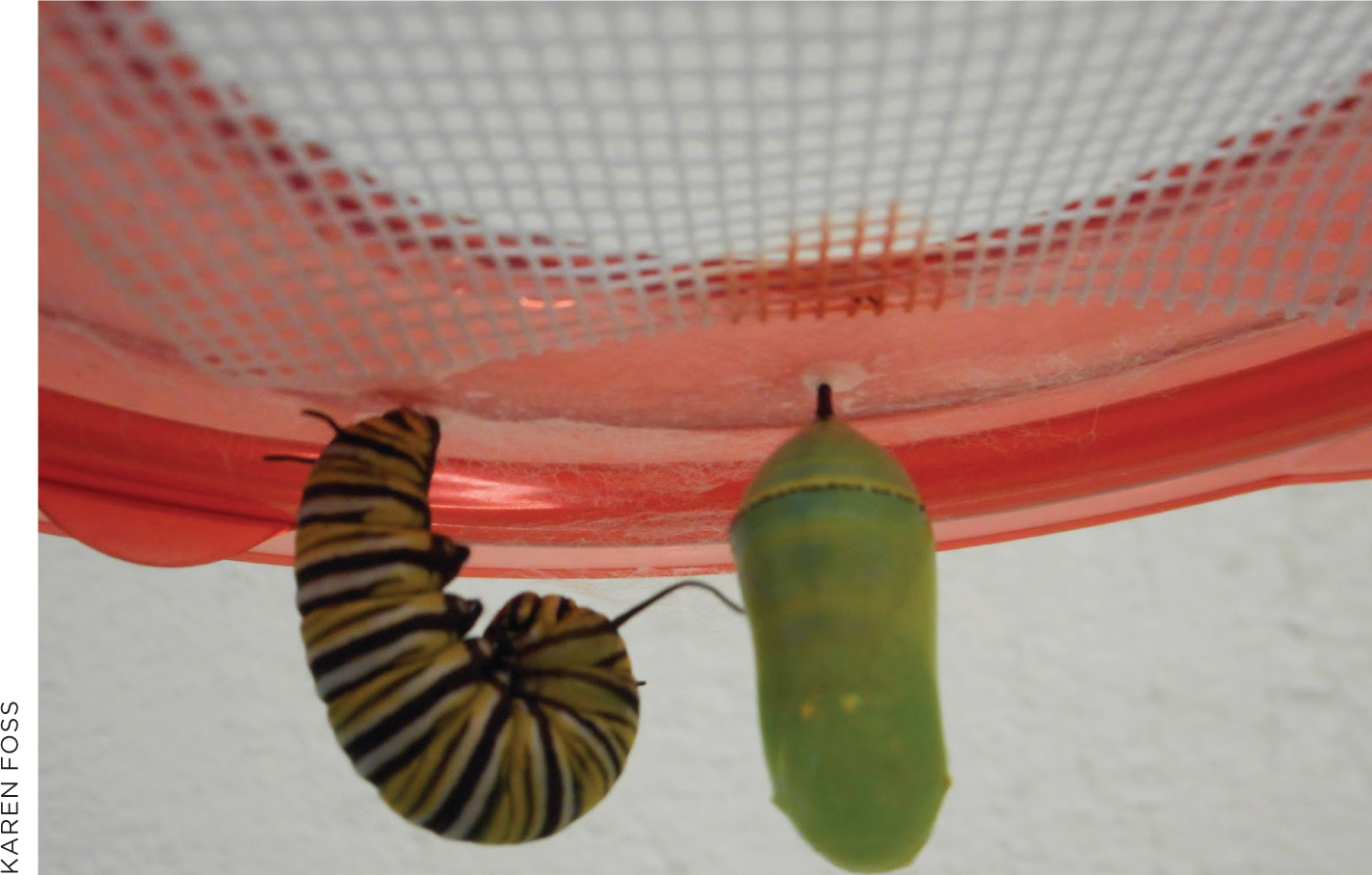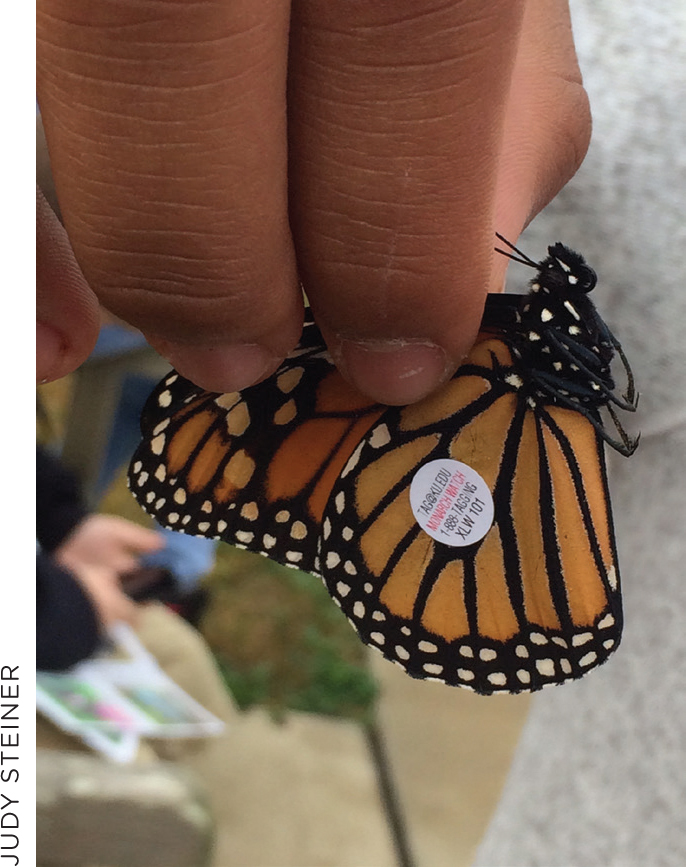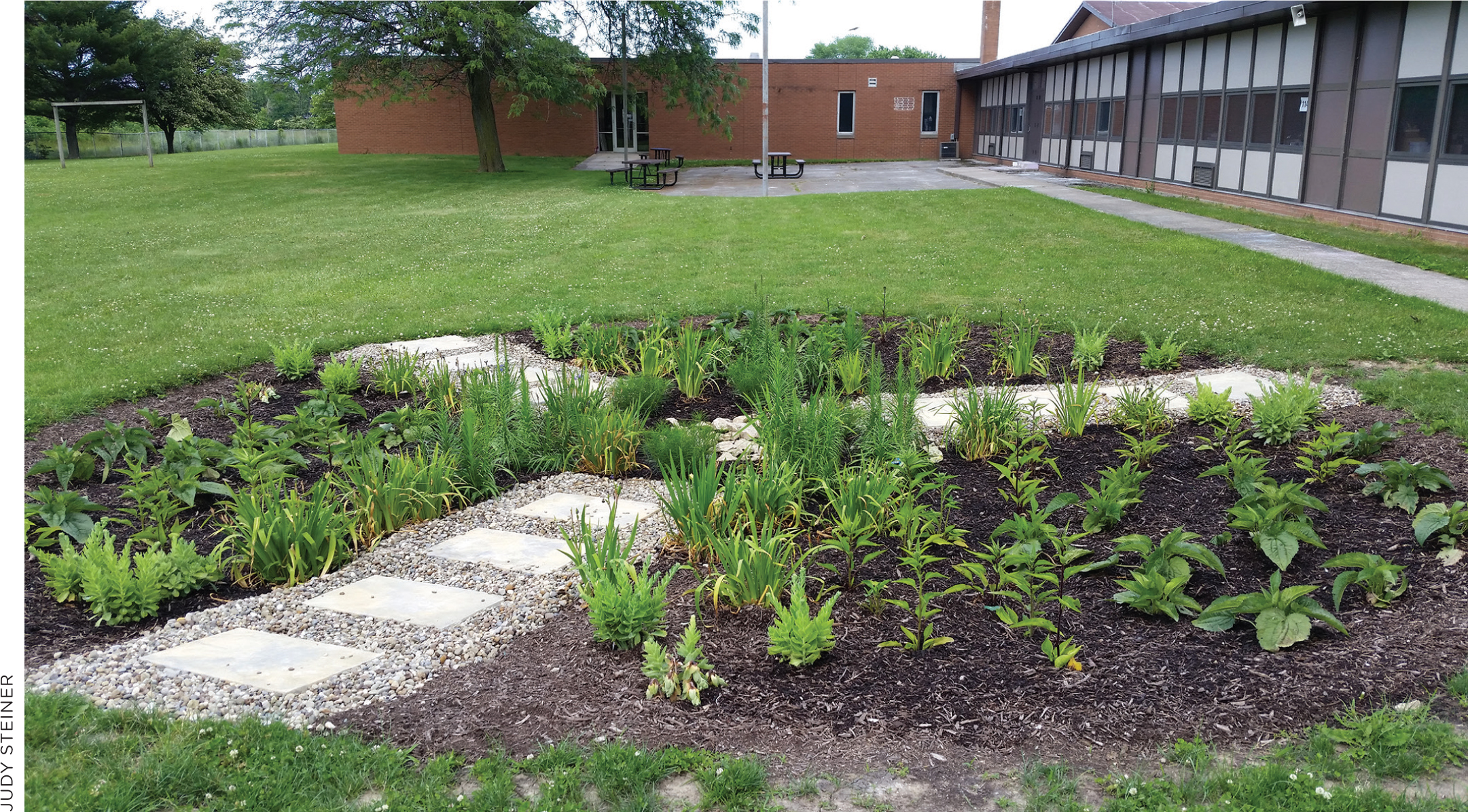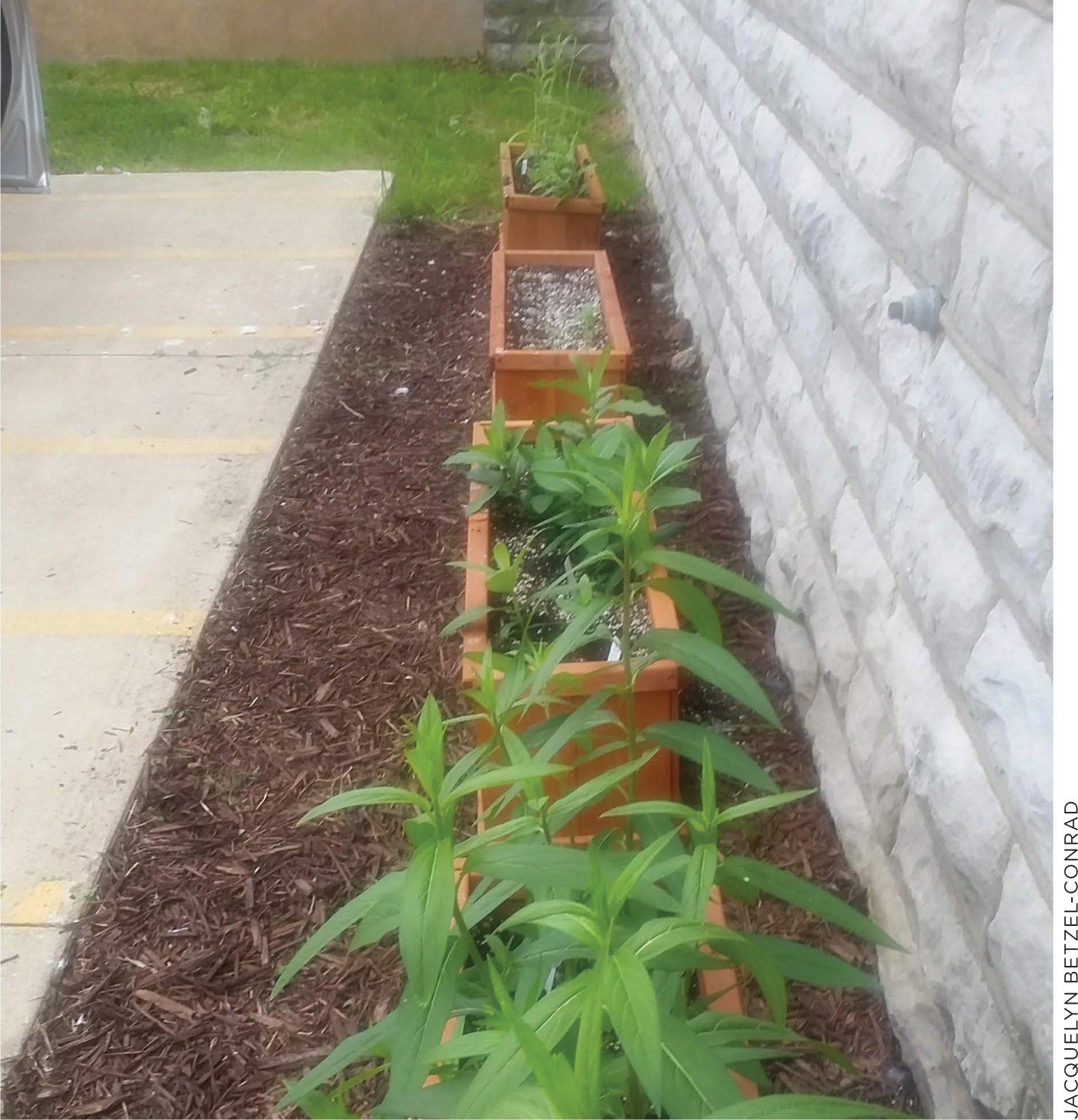Methods and Strategies
Students as Citizen Scientists: It’s Elementary
Principles for effective school-based citizen science
Science and Children—July/August 2020 (Volume 57, Issue 9)
By Meredith Hayes, P. Sean Smith, and W. Robert Midden
The Next Generation Science Standards (NGSS) call for a fundamental shift in how students experience science instruction, advocating for experiences that interweave disciplinary core ideas, science practices, and crosscutting concepts—what the NGSS refer to as 3-dimensional instruction (NGSS Lead States 2013). Citizen science (CS), when implemented well, responds to this call by providing students with authentic opportunities to do science and engage with all three dimensions. In this article, we discuss principles for successful school-based CS, drawing on successes and challenges teachers experienced when incorporating CS into their science instruction.
What is Citizen Science?
CS involves individuals who are not professional scientists in authentic scientific endeavors, typically in collaboration with or supervised by professional scientists or scientific institutions. Often, CS projects engage large numbers of individuals in collecting data, expanding the capacity of professional scientists and making research possible that would otherwise be impracticable. One of the largest CS initiatives is GLOBE (Global Learning and Observations to Benefit the Environment). GLOBE is an international program sponsored by NASA as the lead organization—with support from the National Oceanic and Atmospheric Administration, the National Science Foundation, and the Department of State—that involves grades 3–12 teachers and their students collecting a wide array of environmental data using strict protocols that are the same everywhere around the globe (https://www.globe.gov). The Resources section includes links to several individual citizen science projects. In addition, the SciStarter website (https://scistarter.org) includes information on over 1,000 projects categorized by topic and age group.

As part of their CS project, students observe metamorphosis in the classroom, first seeing how caterpillars form a chrysalis.
Citizen Science in Schools
Increasingly, CS is making its way into schools and into science classes in particular. A recent issue of NSTA Reports highlighted teachers’ experiences incorporating CS into their classrooms (NSTA 2018), ranging from kindergarteners identifying Monarch eggs and larvae to secondary students mentoring younger students as they examine local watersheds. Students can contribute to many of these projects, but when they do not understand why they are collecting data, why they are collecting data in a particular way, or what the data could mean when analyzed appropriately, CS does not measure up to recommendations in the NGSS. In fact, what little research exists on school-based CS suggests it is not reaching its potential. According to Feldman and colleagues’ review of CS projects in schools (as cited in Penuel and Means 2004), students struggle to determine what the data mean or why they are collecting it.
Classroom teachers are uniquely positioned to shape how students experience CS. In well-implemented, school-based CS, students learn core ideas by engaging in science practices, including planning and carrying out investigations, analyzing and interpreting data, and constructing explanations and models. Recognizing the educative potential of CS and the unique position of classroom teachers, a recent six-year-long program located in the upper Midwest of the United States, studied the effects of integrating CS into grades 3–8 on student motivation, engagement, and learning in two collaborating school districts. Each grade level’s project was intended to engage students in research designed to address questions of both scientific significance and local relevance. For example, the third-grade CS pollinator project involved monitoring bees and butterflies to collect and analyze population data, and fifth graders assessed local water quality. The program matched local professional scientists with grade levels and helped prepare these individuals to work with elementary and middle grades teachers and students. (Learn more about the program by viewing a video of its work at: https://stemforall2018.videohall.com/presentations/1075).
This article presents three principles for effective school-based CS, supported with case study data from two third-grade teachers and one fourth-grade teacher who participated in the aforementioned program. Data collection for the case studies consisted of classroom observations, in-depth interviews, and a survey.
Principle 1: Alignment with standards and existing school- or district-level initiatives is crucial.
If teachers see a CS project as only loosely related to the standards they are expected to teach, they will find it difficult to justify regularly devoting instructional time. And if students do not have regular experiences with the CS project, it is unlikely they will be able to move beyond data collection to more meaningful aspects, like analyzing and making sense of data. Fortunately, the pollinator project aligned well with third-grade standards and enabled one teacher to expand her plans to raise Monarchs to teach students about insect life cycles (disciplinary core idea 3-LS1-1: Reproduction is essential to the continued existence of every kind of organism. Plants and animals have unique and diverse life cycles) into a CS project using Journey North (https://journeynorth.org/monarchs). In her words:
Well, I think that before, it was more the kids just could observe. It wasn’t quite as sensory. Now it’s sensory. They get to touch them and put stickers on their wings, and let them go. Before, it would just be a few—I just basically did it to just teach insect life cycles, whereas now, they’re really passionate about it, because we know that the monarch population is dwindling year after year. We had pen pals in Mexico through the Journey North project.

Students tag Monarch butterflies in order to track their migration.
In addition, teachers found it easier to integrate their CS project with instruction when it aligned with district initiatives. One described how her use of CS fulfilled her district’s project-based learning (PBL) requirement:
PBL and CS really go hand-in-hand if it’s in science…. It’s always trying to get more bang for your buck with the minutes you have in a day…. It’s like, “We’re going to do this anyway, so we might as well just take it a little bit more in depth and call it this, too. We’re going to satisfy two requirements.”
Principle 2: Data collection sites should be easily accessible and, where possible, on school grounds.
When data collection can take place on school grounds, it can then be done in as little as one class period, and students can collect data much more frequently. Recognizing the benefits of on-site data collection, one teacher, who is at a temporary school site without a pollinator garden, created planter boxes so that students would be able to regularly monitor pollinator activity.
Off-site data collection requires funding for transportation and a substantial amount of instructional time and coordination. Therefore, students cannot collect data as frequently. For example, one teacher found Worm Watch (http://greatlakeswormwatch.org) data collection problematic with the lack of an on-site garden:
I wish we had done more data collection on Worm Watch. I felt like, because we didn’t have a space with an actual garden, some of the things that were suggested to us about going out and dredging up worms from our property—we didn’t have the garden there…. So, for me, that part wasn’t very successful.
Data collection outside of the school day understandably presents its own issues. Another teacher stopped participating in Frog Watch (https://www.aza.org/frogwatch) because students had to collect data in the evenings.
Principle 3: Others’ support helps to build confidence and momentum in project implementation.
Teachers found success implementing CS when they had the support of others, including fellow teachers, professional scientists, or administrators, to help optimize the experience for students. Having a network of teachers implementing CS has many benefits, including opportunities to troubleshoot and encourage one another, vertically aligned projects, and sharing of supplies and data. For example, one teacher recounted her experience collaborating with other teachers as follows:
I think knowing that we weren’t by ourselves through the whole thing, that we did have others we could turn to.… And in those small groups, we shared, “This is what works for me. Is that working for you? What’s working for you?”
In addition, several teachers are now planning a schoolwide project that spans multiple grade levels and revolves around a garden on school grounds. In order to make these plans a reality and continue implementing CS beyond their participation in the program, these teachers applied for and received grant funding to support their CS work. (Note: Local businesses and agencies often fund teacher-initiated grants. Refer to Figure 1 for a list of questions to consider in applying for a grant to support school-based CS.)
Principles into Practice: Questions to Consider.
1. Align CS projects with standards and existing initiatives.
a. What science content standards are the teachers responsible for teaching?
b. Is there a scope and sequence or pacing guide mandated by the school or district?
c. What other instructional initiatives is the school or district currently a part of that could potentially compete or be leveraged?
2. Choose easily accessible data collection sites.
a. Is there already a natural area on school grounds that could be used for CS investigations?
b. Are there local organizations that may be interested in helping to plant a garden on school grounds?
c. If on-site data collection is not an option, is there a walkable option or free transportation available to access another site?
d. When do teachers think they can fit data collection into their schedule? Are there any constraints related to time of year (e.g., extreme cold) or time of day (e.g., outside of school hours) to consider?
3. Plan and implement CS projects with professional scientists and other key stakeholders (e.g., teachers, school administrators, community members).
a. What local organizations (e.g., museums, conservation groups, extension offices, universities) may be able to provide content expertise? If not local, what are other feasible options to infuse such expertise (e.g., video conferencing)?
b. What sources of funding does each stakeholder have access to for obtaining and maintaining necessary materials, equipment, and supplies?
c. What time is available for teachers to participate in professional development as a group?
d. What opportunities are available for involving school administrators to ensure their support?
e. What opportunities are available for helping the professional scientists learn how to best support the teachers and students?
f. If the scientist and teacher are working together in the classroom, what roles will each take on?
To help other teachers get started with the pollinator project, one teacher has taken it upon herself to provide them with caterpillars and is personally motivated to sustain project activities. As she described:
I have caterpillars right now. I have a tent in my yard, and I probably have 100 caterpillars, and I collected 30 eggs yesterday. Over the summer now, both of my colleagues grow these different kinds of milkweed that I grow, because I’ve provided plants for them. They’ll take some caterpillars and just raise them into butterflies with their kids. It’s not really like this is schoolwork that we’re doing. This is like, “Let’s help the butterflies, so there’s more butterflies.”
Professional scientists, with their in-depth expertise, can also be a powerful resource for familiarizing teachers with CS projects. Teachers found it valuable to have scientists as a resource to call on and provide training. In one teacher’s words:
You need to check up on the availability of the scientists. When you’re choosing your topic, make sure you have an expert in that field that is available; like the pollinator [project]. I just feel that, in order to make the project sustainable, your scientists need to be available from your topic of choice.
In the pollinator project, a professional scientist supported teachers in getting the project off the ground. He provided important content background, trained teachers in data collection techniques, and gave advice on how to enhance school grounds to attract pollinators so data collection could happen on site (see Principle 2). Each of these types of support is available in other ways (e.g., the Bumble Bee Watch website, https://www.bumblebeewatch.org), but having a professional scientist readily accessible makes the work that much easier.
The support and approval of administrators can help teachers sustain implementation. Administrative support also helps eliminate barriers (e.g., lack of financial resources) that may otherwise inhibit CS implementation and can help make CS part of a school’s routine practice. As one teacher said:
When I just turned in a [purchase order] from my PBL project, and I want 12 millipedes and 100 worms, [our principal] didn’t blink. She’s like, “Okay.” She just wrote it down because it’s just part of what we do.
Implications
These principles have important implications for individuals or programs hoping to initiate or support school-based CS. Engaging teachers and administrators in selecting projects can help ensure alignment with content standards and existing initiatives at the school and district level. In addition, bringing administrators on board early fosters a partnership that positions administrators to be able to plan for supporting project implementation, in both a financial and programmatic sense. When selecting a project, another important consideration is how feasible it will be for students to collect data, something teachers can offer a valuable perspective on by envisioning how data collection could be integrated into their instructional routines.
We also recommend coordinating networks of teachers to create a support system for CS implementation. Teachers can provide one another practical advice grounded in their own CS experiences. Further, it presents the opportunity for sharing data across multiple sites, enriching the analysis experience for students. In addition, support from local professionals is key, as their expertise is valued both in initial training and ongoing guidance.

In lieu of a pollinator garden, students use planter boxes filled with native plant species.
Following these principles can enhance student learning in school-based citizen science and offer students the kinds of authentic science experiences envisioned by the NGSS. Although these principles were generated with at-school implementation in mind, CS often calls for experiences outside of the classroom, making them a potential fit for distance learning. A few considerations can help foster authentic science experiences at home. Short tutorial videos that provide guidance from their teacher and the professional scientists who are leading the CS project, either posted on online learning platforms or linked from project websites, are useful for helping students attend to accuracy with data collection. They also help students learn how to make sense of the data that they and others have collected and draw valid conclusions from those. With students learning from home, it is important to select projects that do not require specialized equipment and to help students and parents identify potential data collection sites that can be conveniently and safely accessed. If data collection is not feasible for all students based on their location, assign roles that enable students to contribute to the project in other ways, such as organizing class data gathered across multiple sites and sharing results with classmates. It is also possible for students to examine data collected by citizen scientists in other locations and to compare and contrast those data with their own to expand their understanding and to draw broader and more generalizable conclusions regarding the relationships revealed in the data.

Having a pollinator garden right outside the classroom allows for more frequent data collection.
Meredith Hayes (m.hayes@horizon-research.com) is a research associate at Horizon Research, Inc. (HRI) in Chapel Hill, North Carolina. P. Sean Smith is president of HRI in Chapel Hill, North Carolina. W. Robert Midden is an adjunct research professor at Bowling Green State University in Bowling Green, Ohio.


